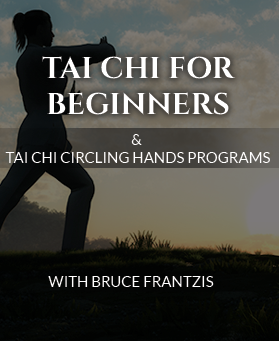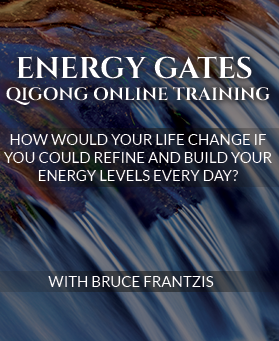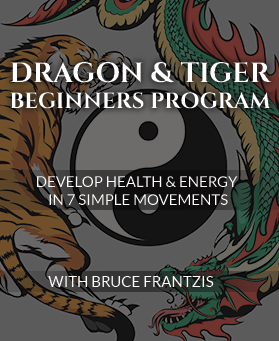What is Bagua?
Bagua zhang (Ba gua chang/Pakua chang) is an internal energy art even more ancient than tai chi chuan. Developed some 4,000 years ago in Taoist monasteries primarily for health and meditation, Bagua zhang techniques are based on the I Ching, an ancient Chinese text written about the nature of change.
Bagua is also a container for the 16 neigong or “internal energy components,” which is the basis of all Energy Arts programs.
In the last several hundred years, bagua zhang has become known as a powerful internal martial art, but it is equally effective as a health and moving meditation practice.
Change is at the heart of life. Bagua zhang practice is about learning to flow with change rather than against it. If you can Master the Art of Change, you will become capable of overcoming obstacles in your life and allow happiness and joy to emerge from within your being.
Whatever your interest, bagua is an amazing practice and one of the greatest gifts from Taoism.
Hsing-i chuan (Xing yi quan, Shing yi chuan), like bagua (bagua, pakua) and tai chi, is a internal martial art. Each of the three internal martial arts has their own distinct characteristics and flavor.
Hsing-i could be considered the most direct and yang practice of the internal martial arts, primary composed of five basic first movements and a core standing practice called Santi.
What is Hsing-i Chuan?
The name hsing-i chuan is composed of three terms. Chuan translates as “fist.” Hsing means “to form something.” I, specifically in the word “hsing-i,” refers to the ability of the mind to create an idea and project it into the body, creating a functional physical form. The term hsing-i, then can be looked at from two perspectives.
- First it is whatever form the mind directs.
- Second, the form can manifest a wide variety of ideas, so you learn how to develop all the ideas within a form.
How Hsing-i is Practiced
Hsing-i practitioners are military in approach–marching in straight lines with a powerful emphasis at the end of every technique on mentally and physically taking an enemy down. The obvious external attributes of punching and striking are inherent to the way hsing-i is practiced.
For many external martial artists NOT satisfied with the slow-motion form practice of tai chi, hsing-i done at normal speed fits the bill. A key feature of hsing-i is that it NEVER retreats.
Moreover, hidden within the apparently linear techniques of hsing-i is a significant amount of very small, almost unseen, complete circles that are normally lacking in external martial arts.
Rather than using muscular tension or anger for power, hsing-i focuses instead on utilizing relaxation, chi (qi) and stillness of mind to accomplish the pragmatic goal of winning in a confrontation.
Hsing-i possesses either the same or similar primary goals as other more external fighting arts, such as karate or boxing, but also includes the chi (qi) work, health aspects and the ability to be martially effective into old age that most of the external martial arts lack.
The physical technique of hsing-i is based completely on efficient use of the neigong internal power system; hence it is internally focused. Because of this, it is capable of making the weak strong and the sick healthy. However, its primary mindset is still the aggressive one of Shaolin karate or boxing.
Five Elements and Forms
Hsing-i has five corresponding forms/fists that are each linked to the five elements. Hsing-i first form/fist is called Pi Chuan (translated as chopping/cutting fist). Pi Chuan associated with the Metal Element.The other four fists are: Tsuan Chuan (drilling fist) associated with the Water Element; Beng Chuan (crushing Fist) associated with the Wood Element; Pao Chuan (pounding fist) associated with the Fire Element; and Heng Chuan (crossing fist) associated with the Earth Element.
Hsing-i chuan also has 12 animals forms that are linked to the martial applications.





Hsing I Chuan has been my central focus since the 80’s, when I studied with the late Kenny Gong in New York’s Chinatown. Having learned Pi Chuan and San Ti already from Kumar, I progressed quickly and became strong and healthy , to the point where I have survived over 30 years as a bouncer and manager in some of NY’s largest nightclubs. In this industry, you are tested on a daily basis, which makes it easy to tell if your practice is effective.
This is a great practice for anyone who actually uses his/her skill in daily life, especially if you want to remain healthy and sane in this crazy world of ours.